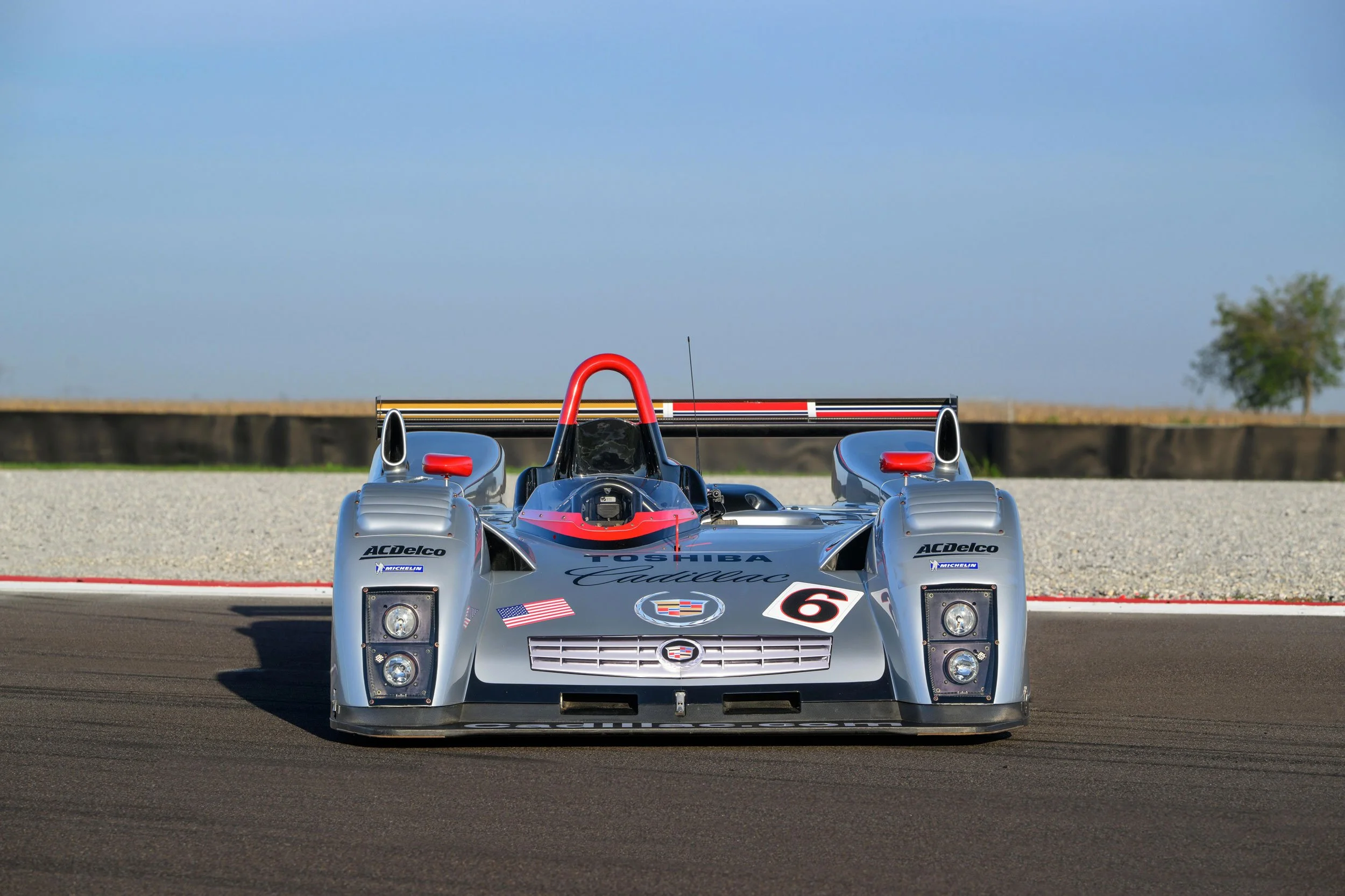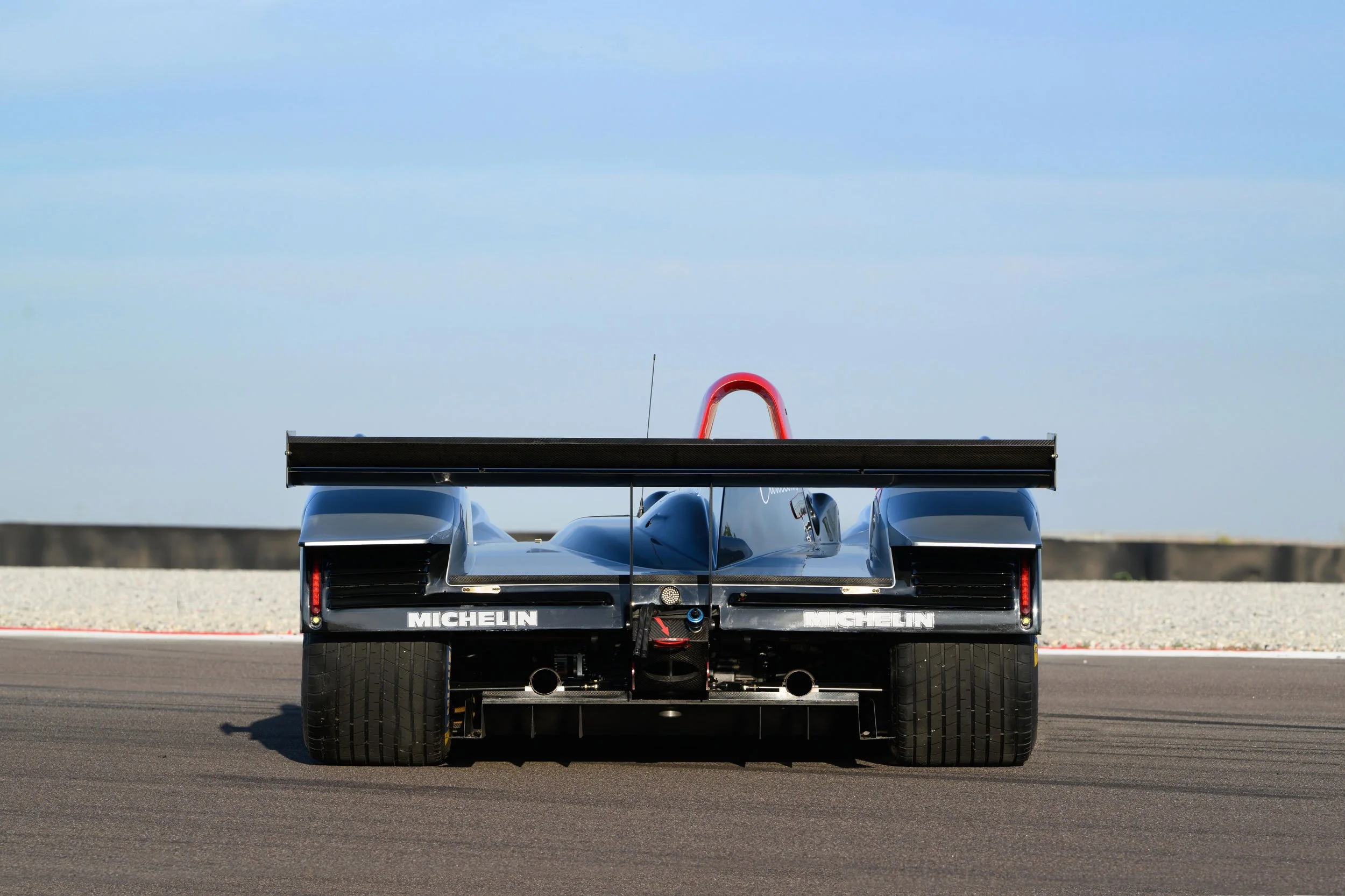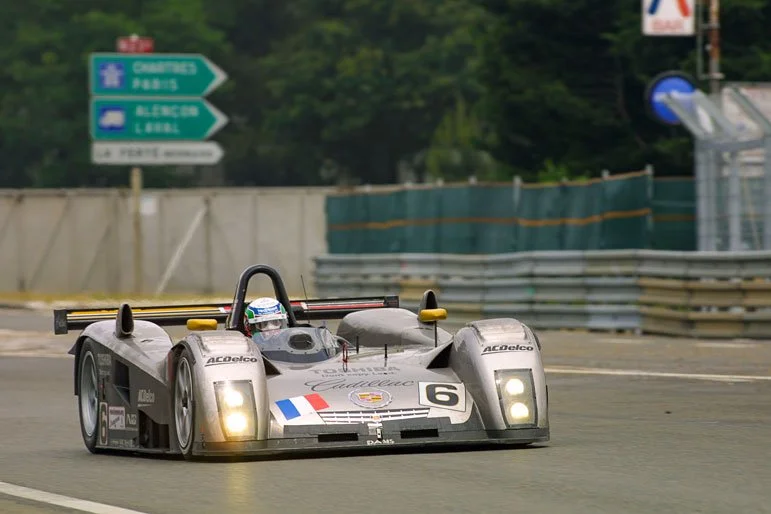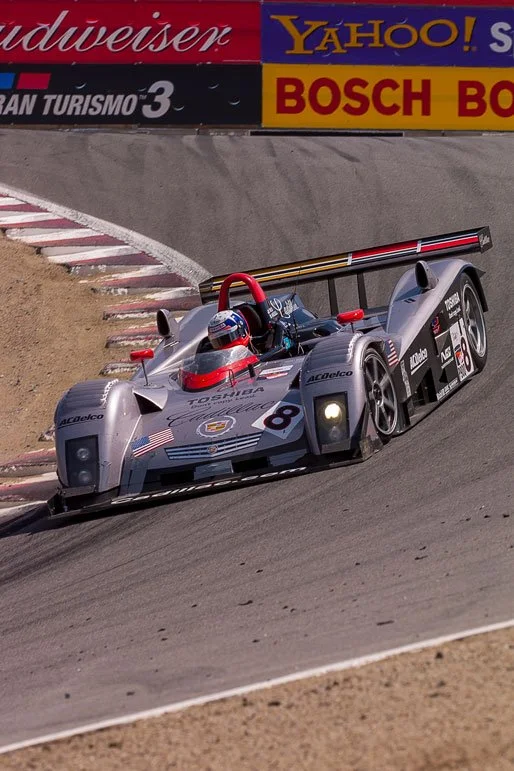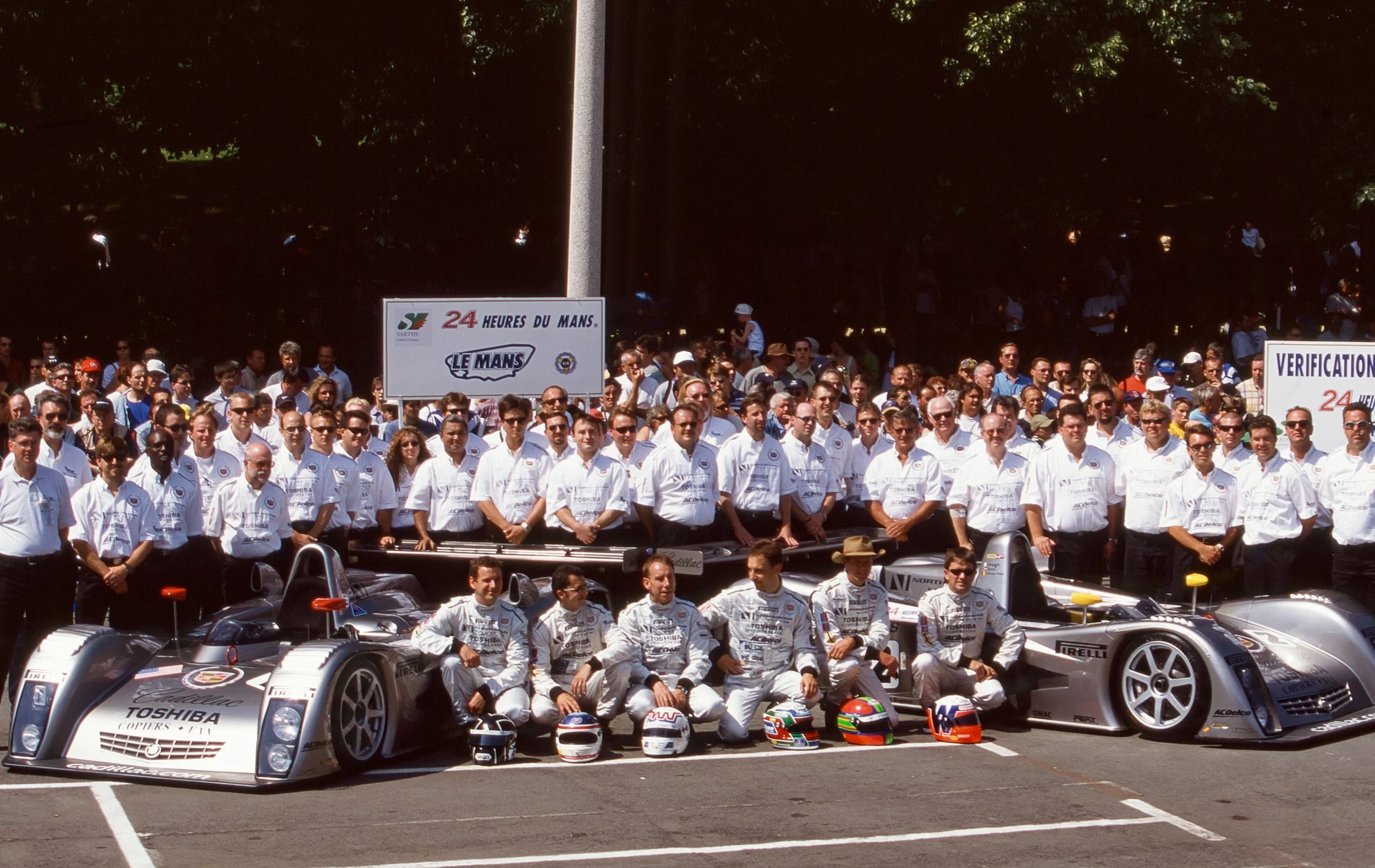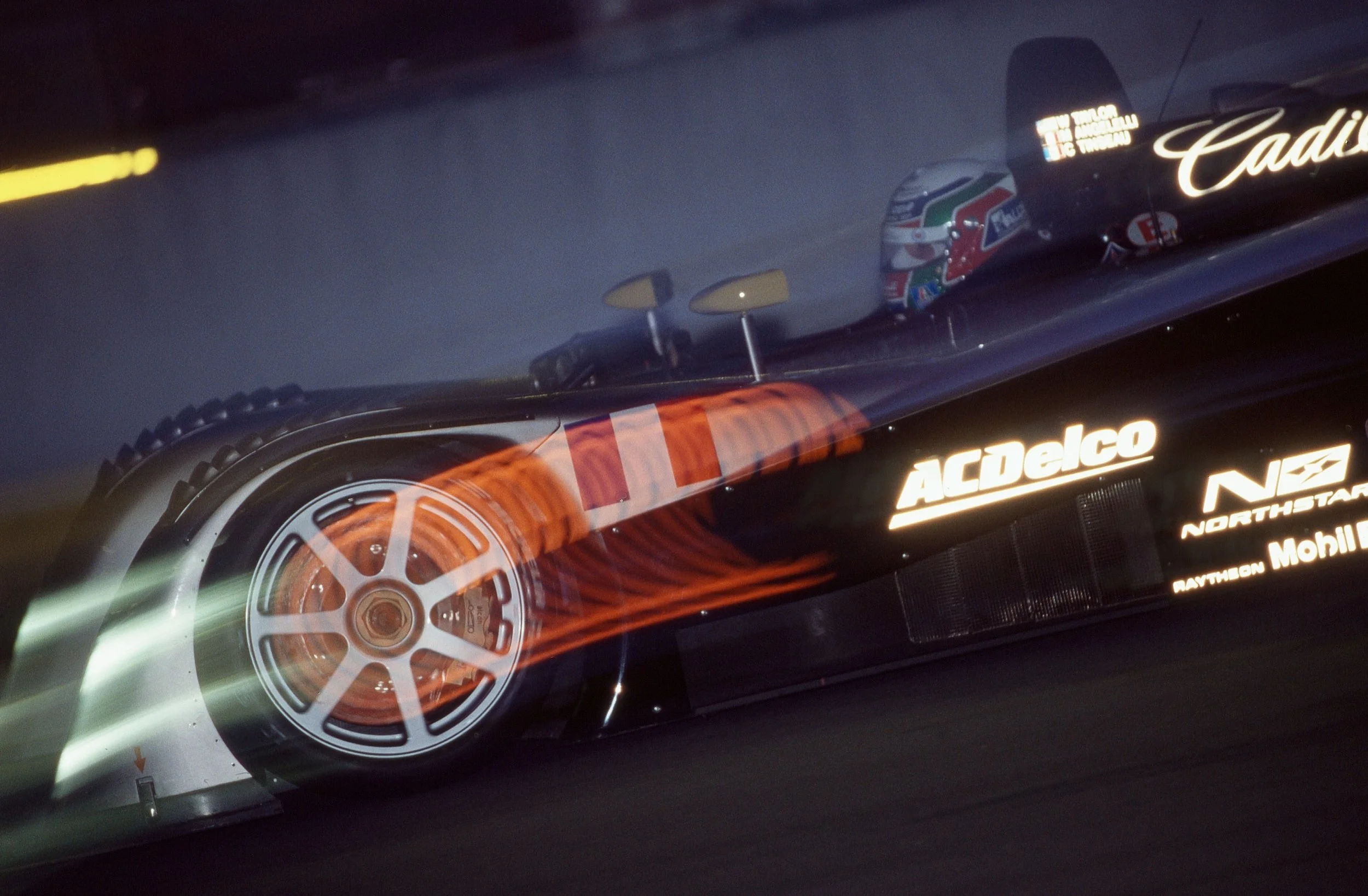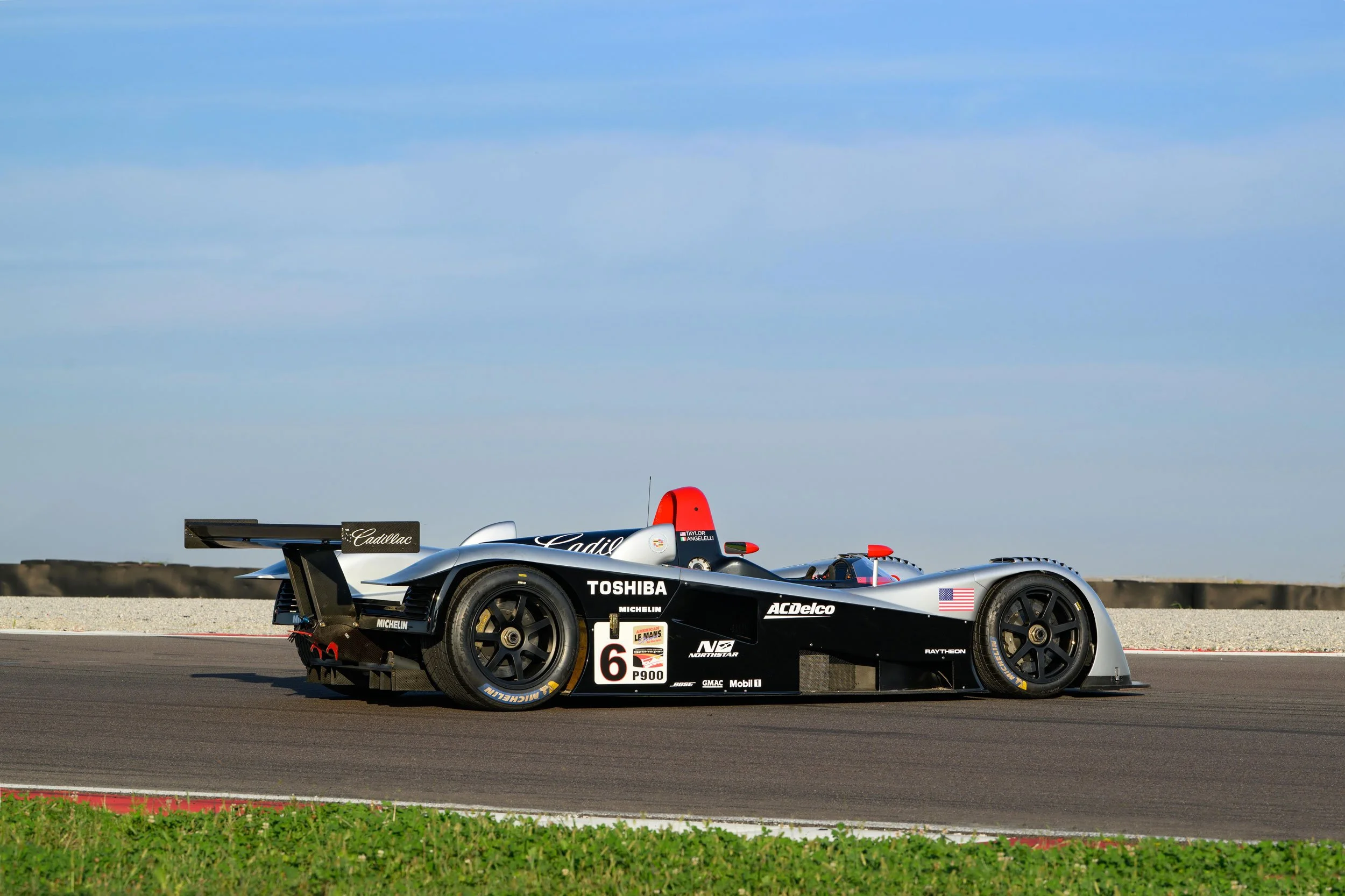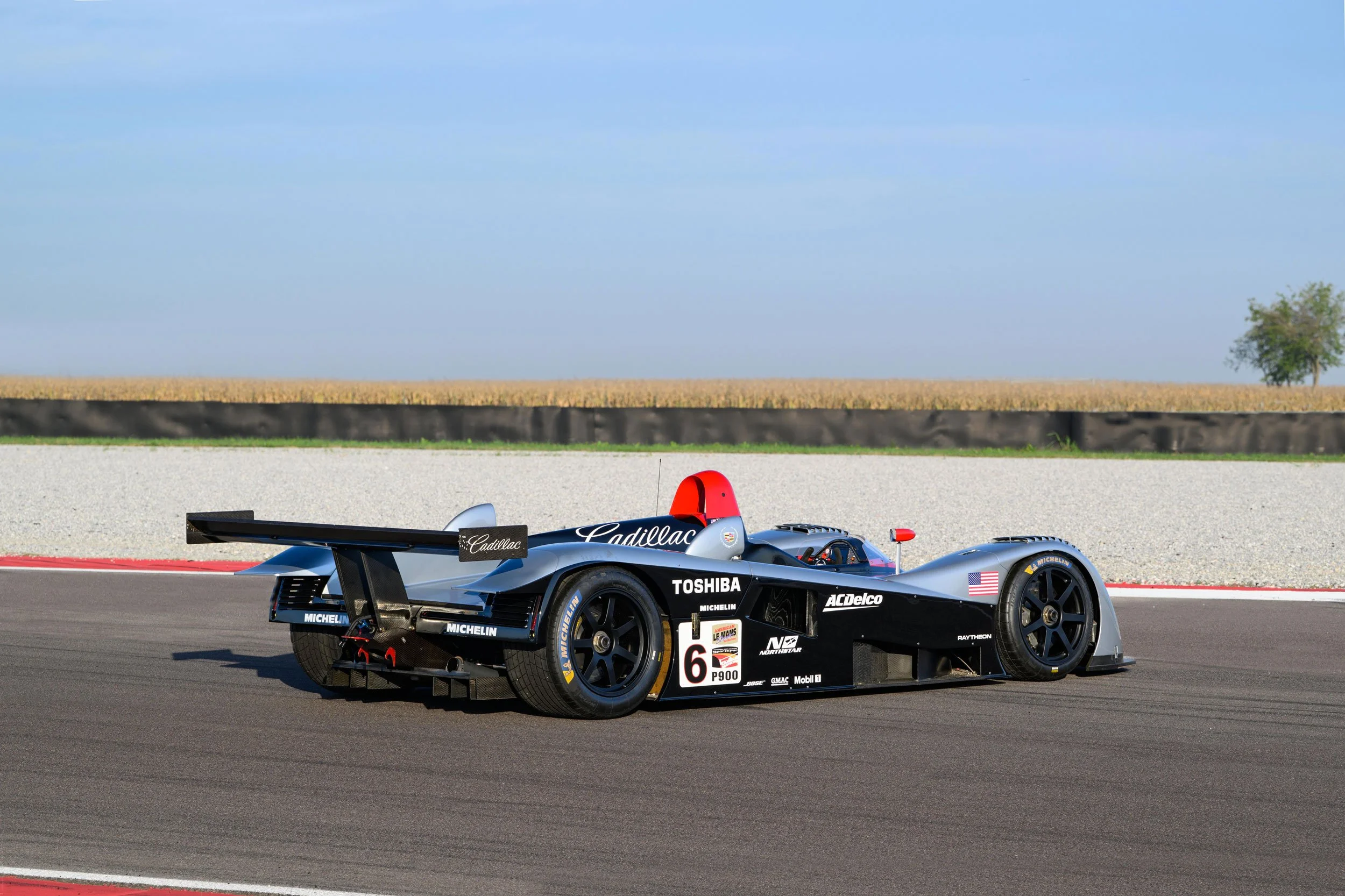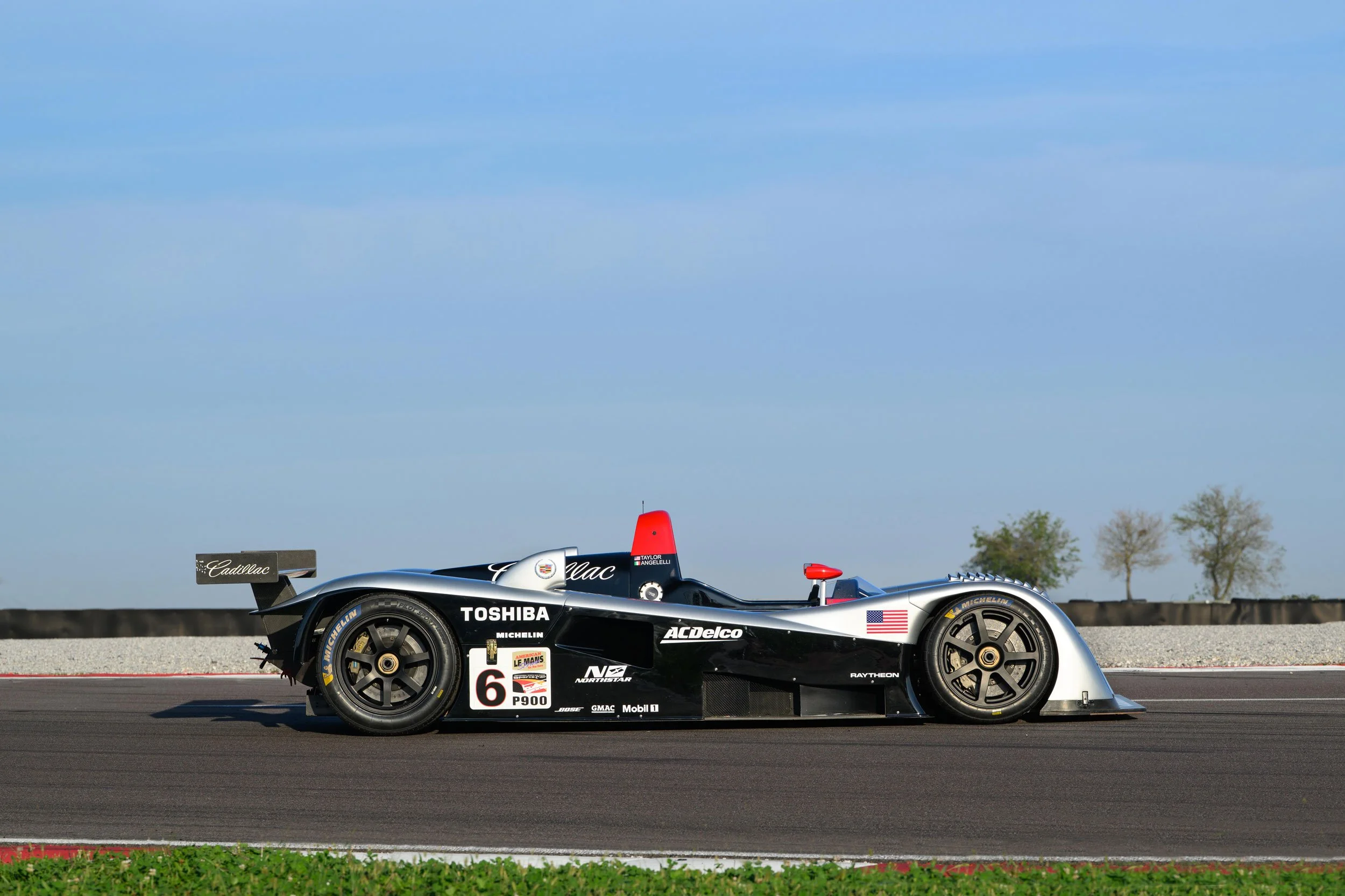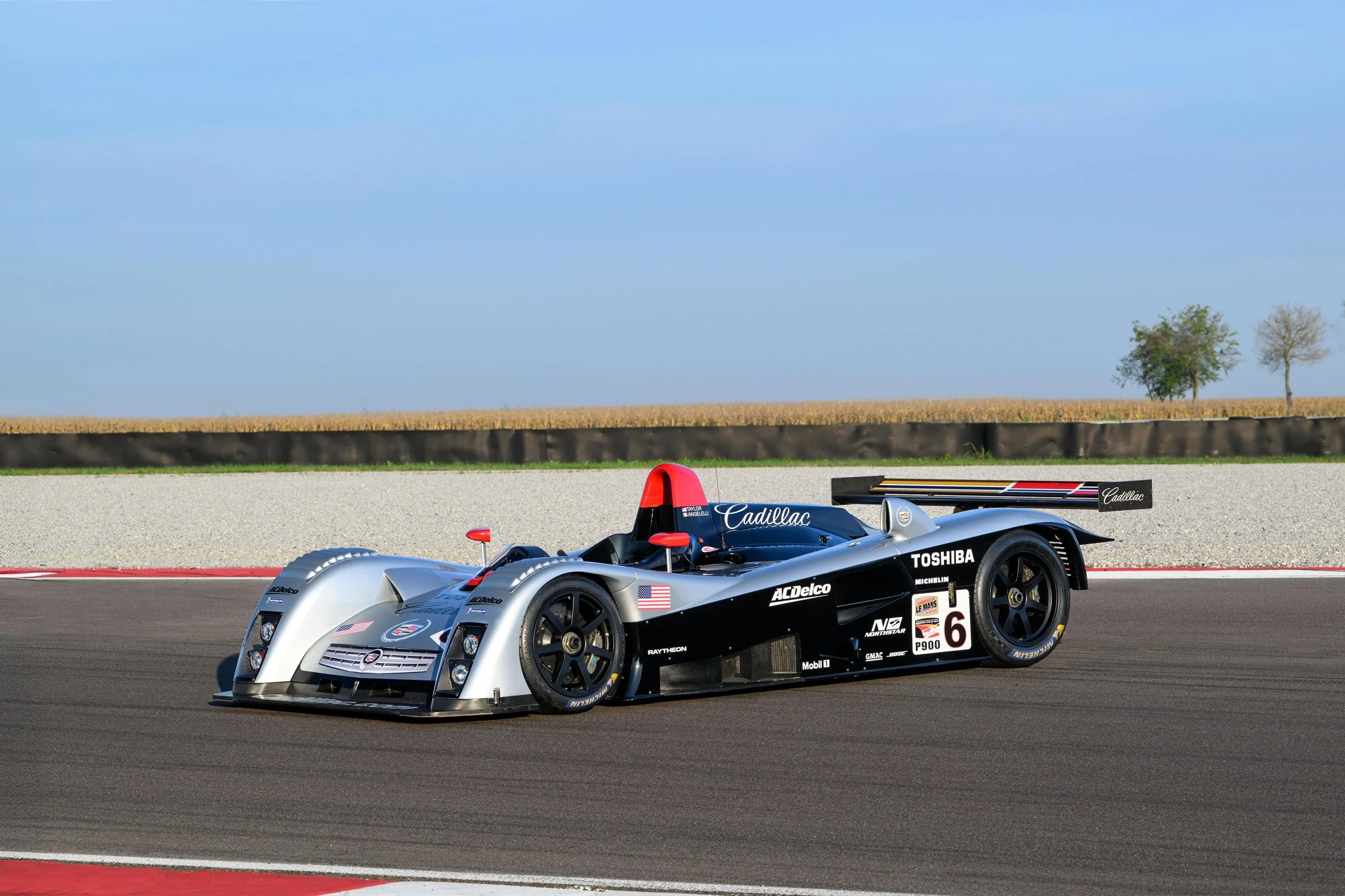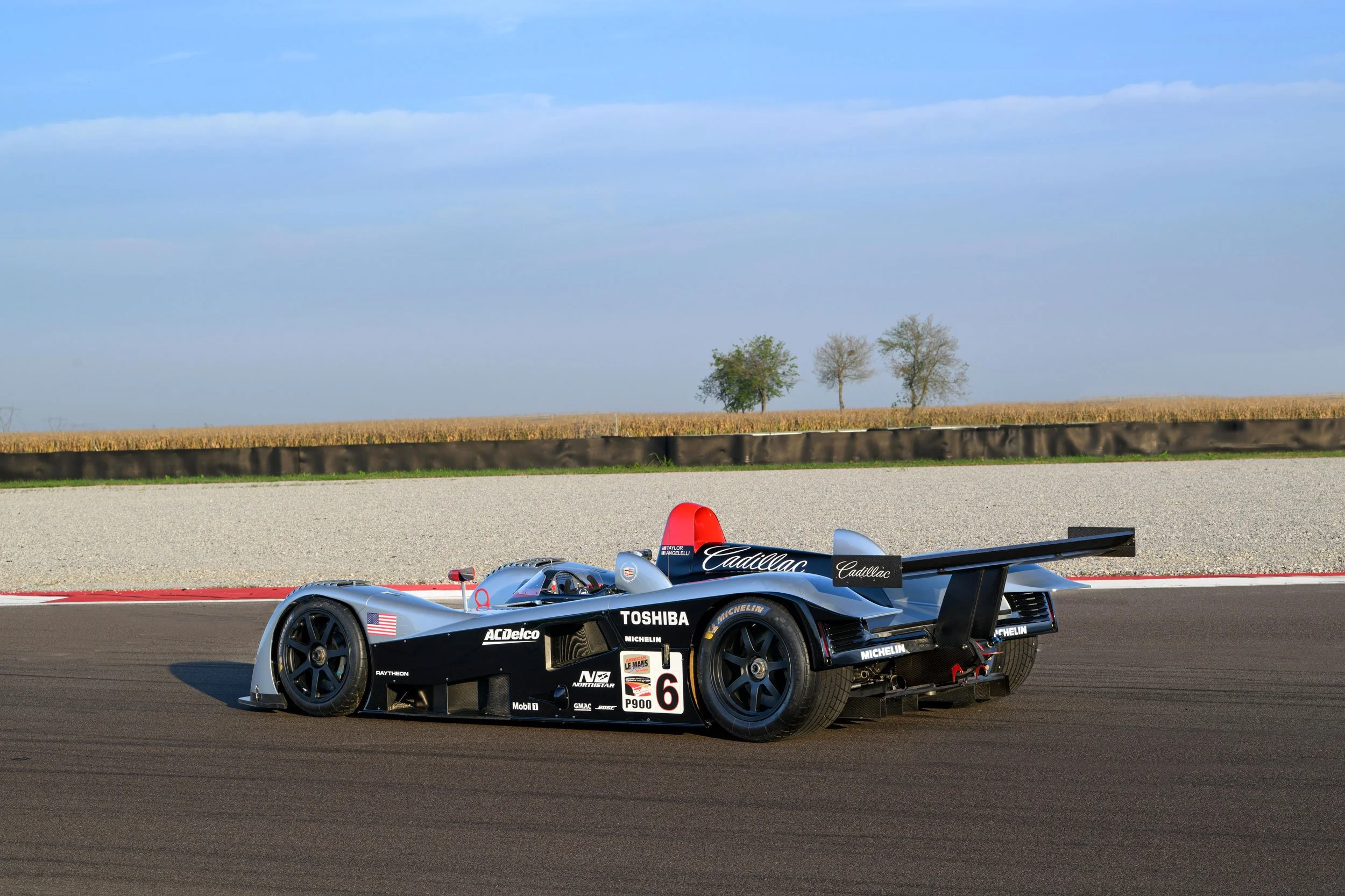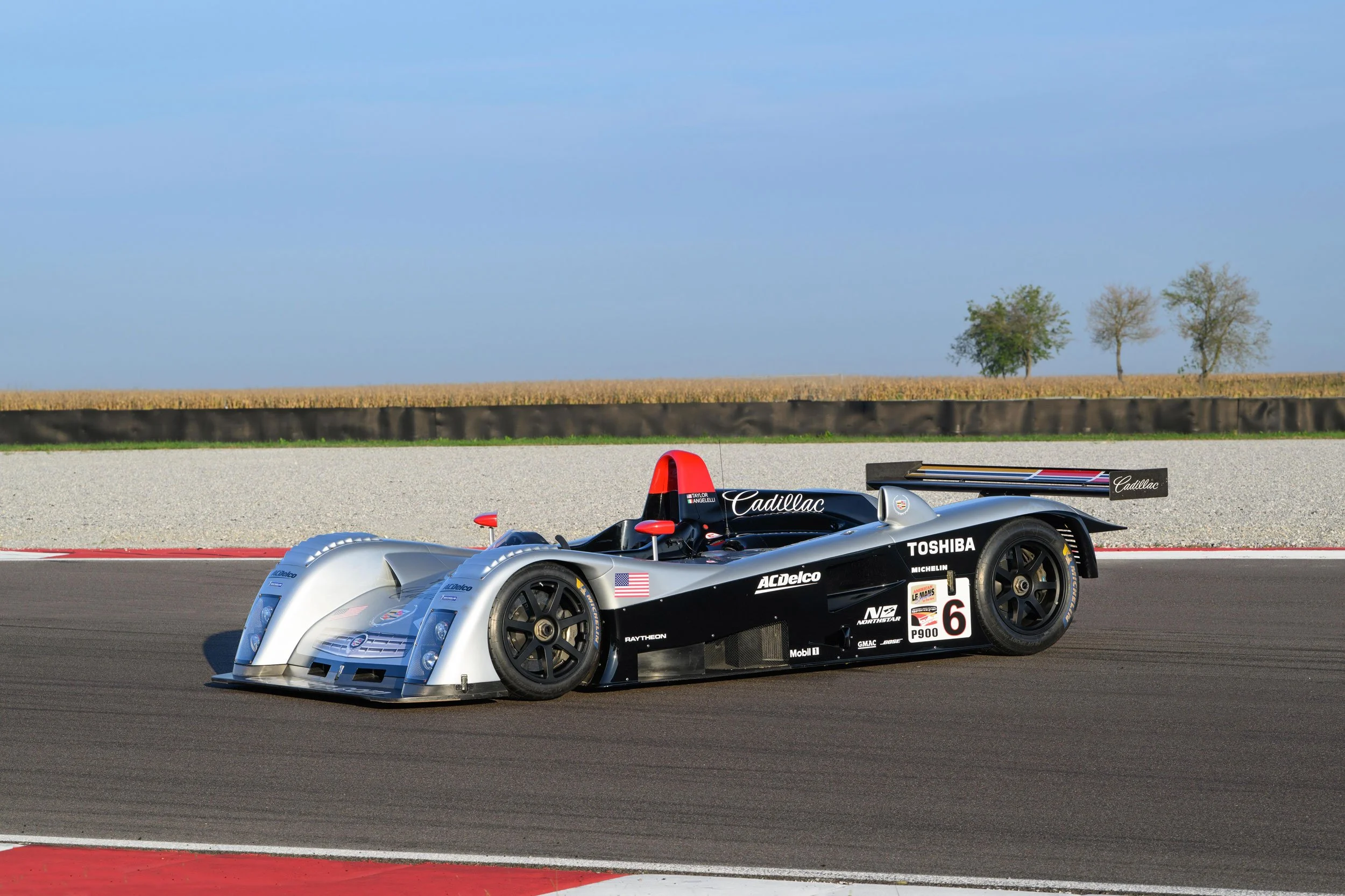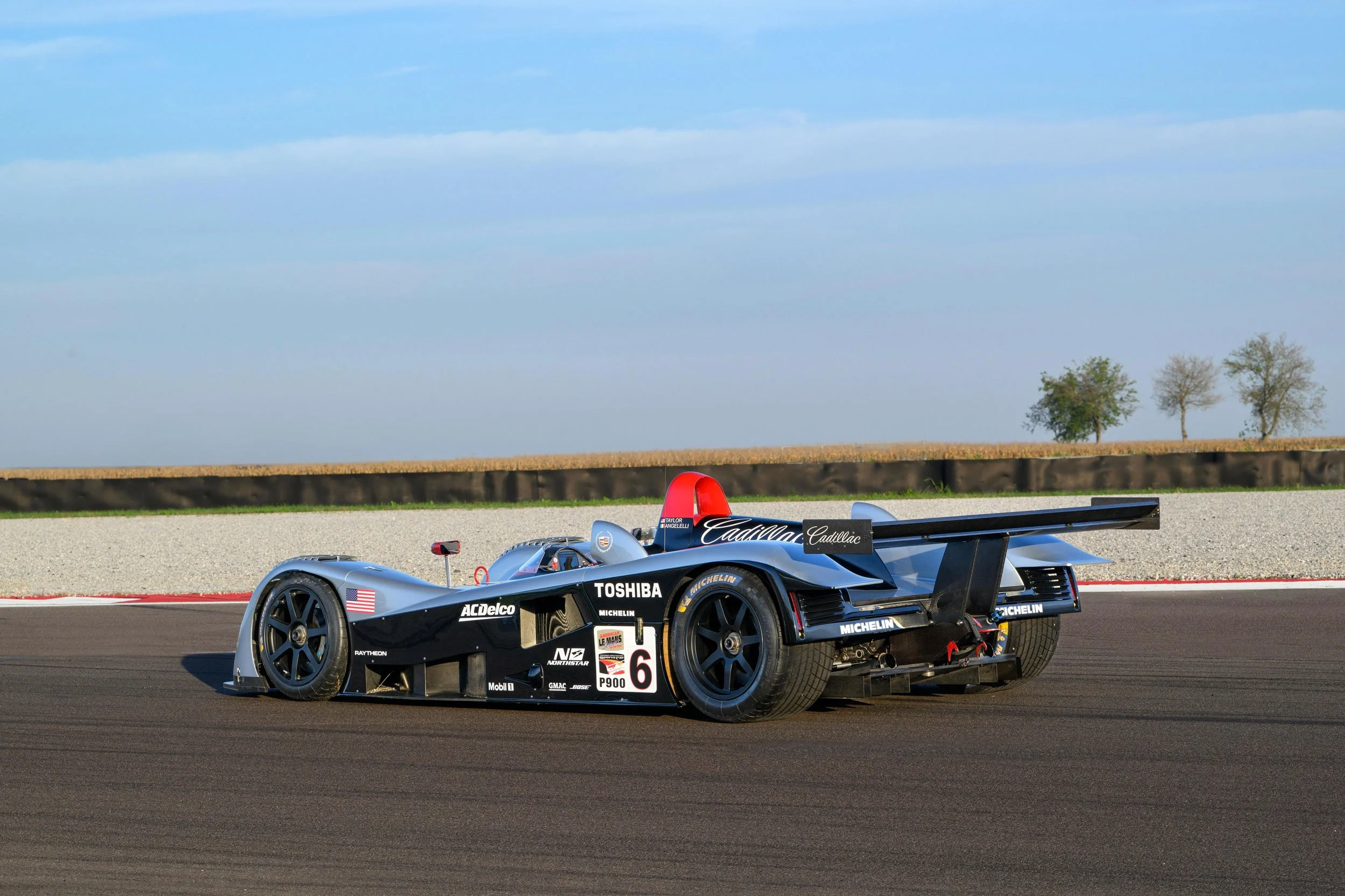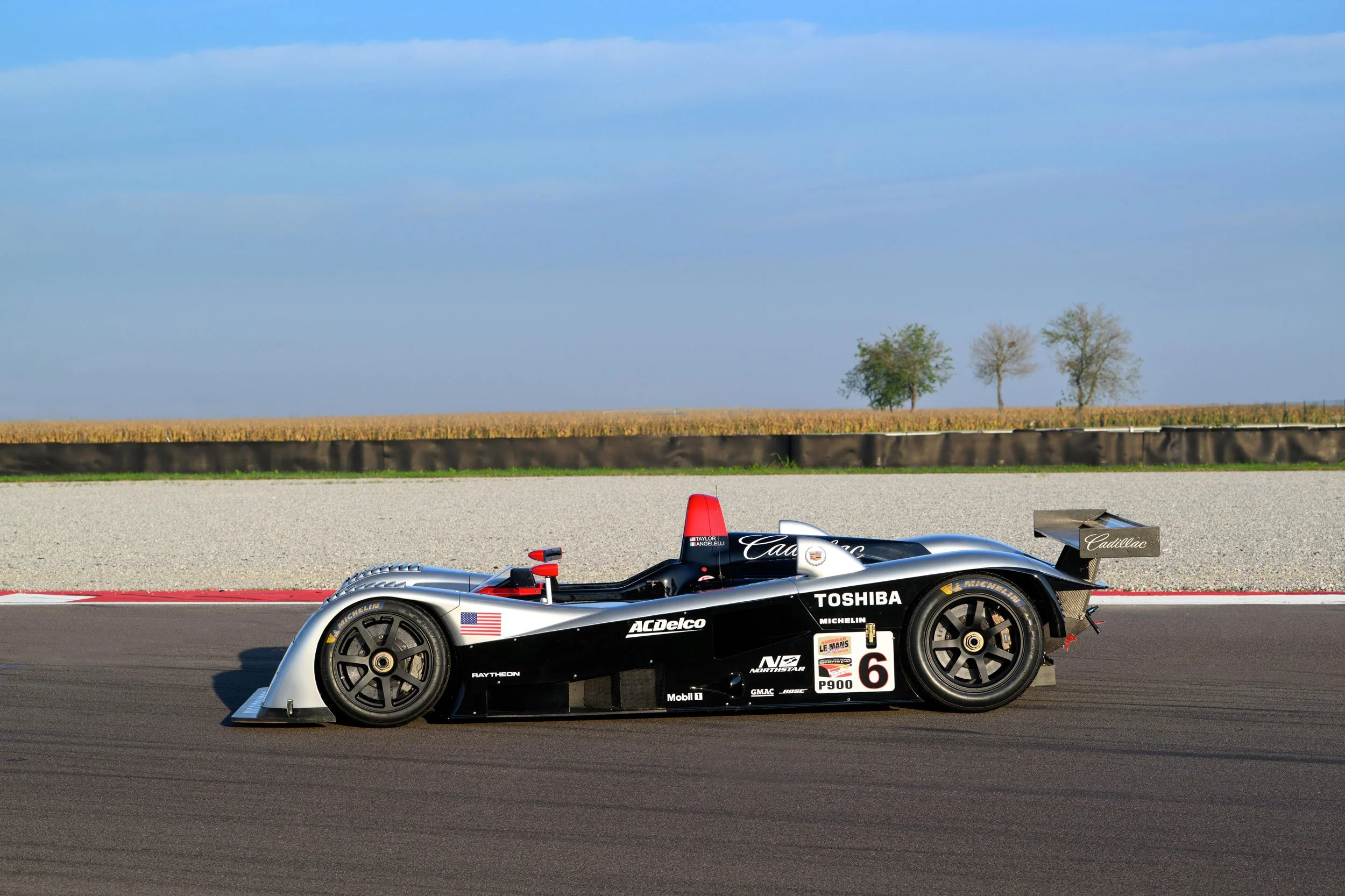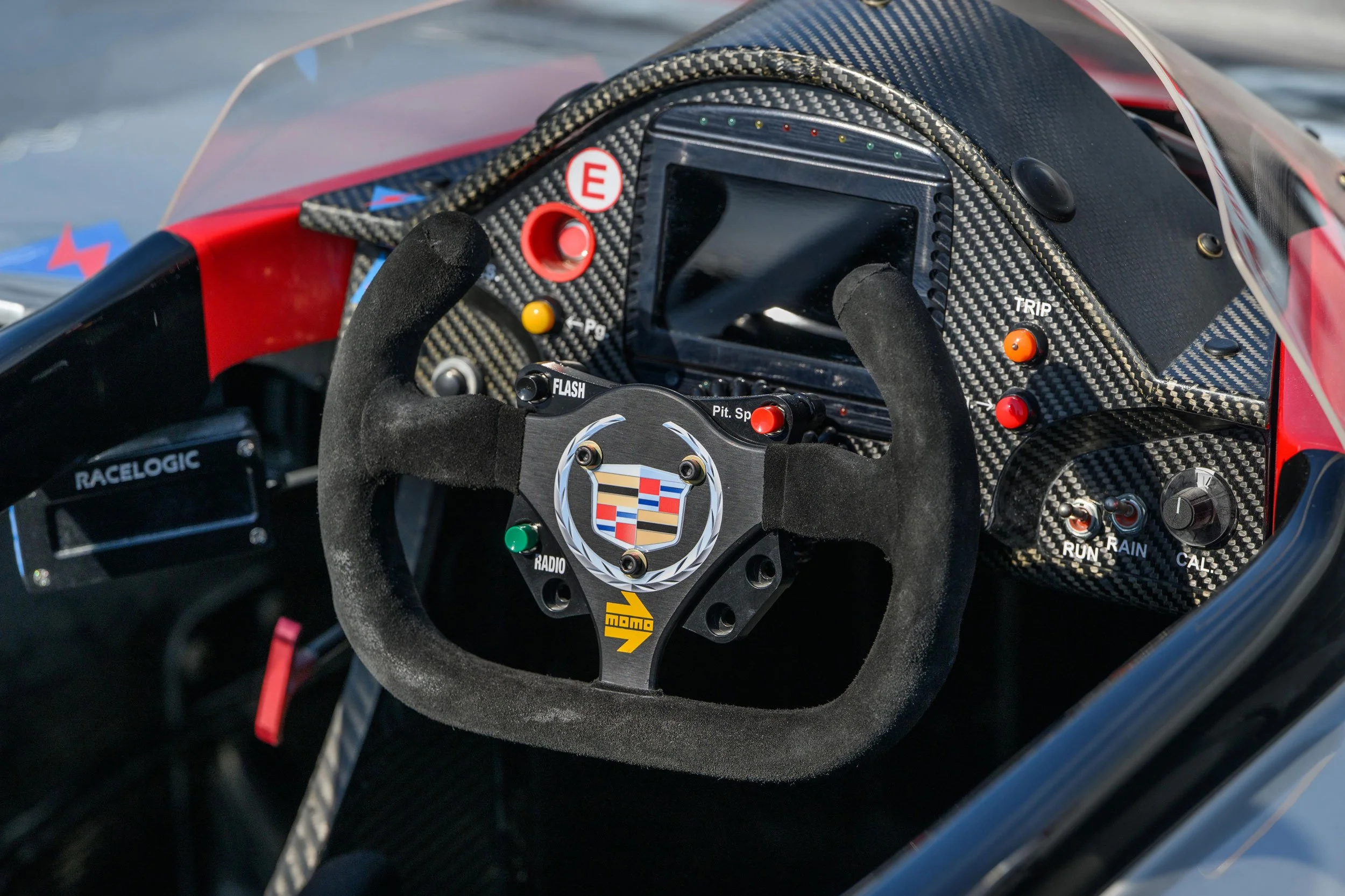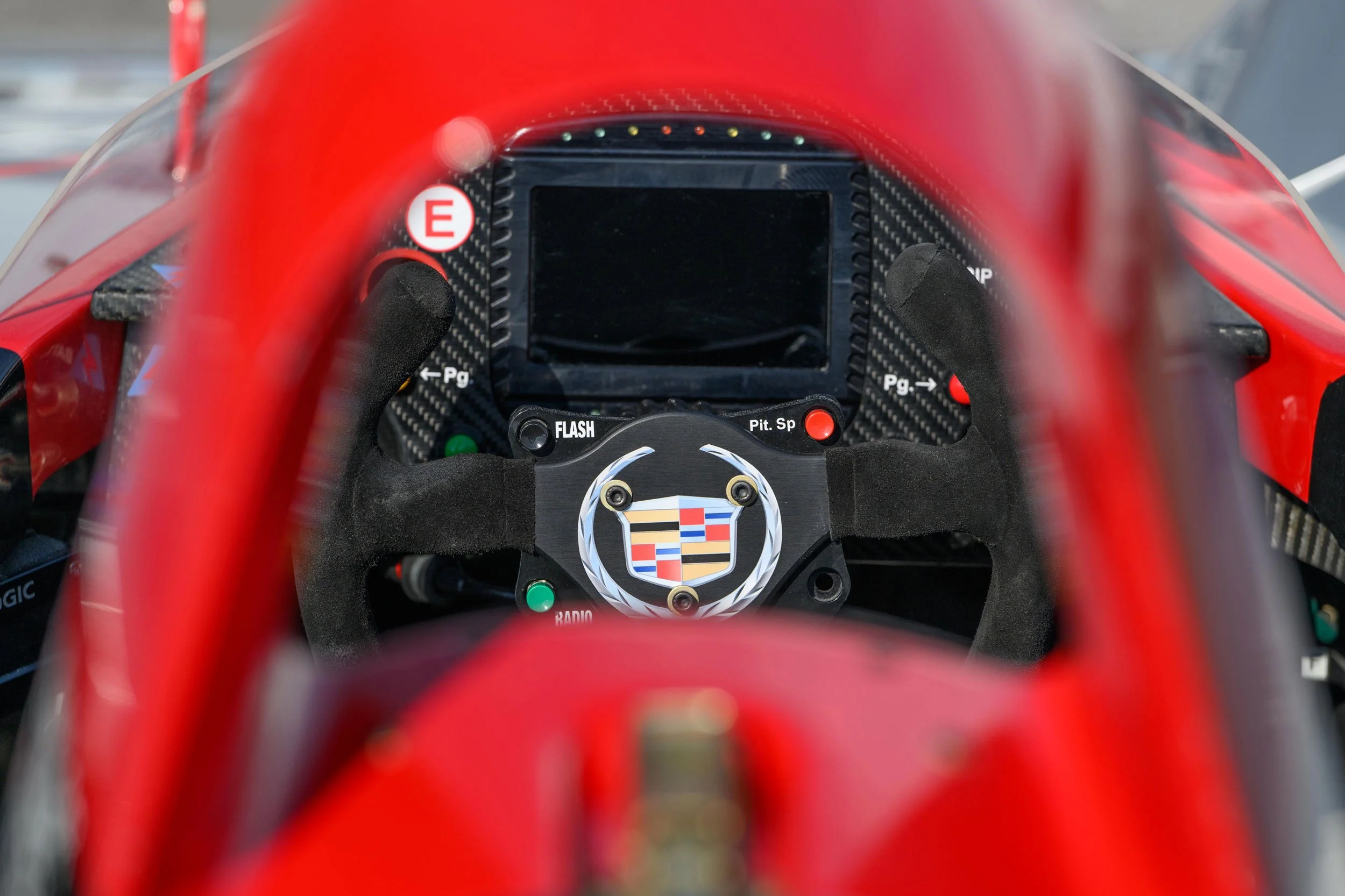2000 Cadillac Northstar LMP-01 - LMP900
£ POA
The most successful chassis from Cadillac’s full factory assault on the world’s greatest sports car races at the turn of the millennium. Now stunningly restored and eligible for the very best historic racing events.
OverviewFull, factory team Cadillac Le Mans Prototype
Designed and built for Cadillac by specialists Riley & Scott
Carbon-fibre composite monocoque with twin-turbo V8
Competed at Sebring, Daytona and two editions of the 24 Hours of Le Mans
Updated to Nigel Stroud’s much-improved LMP 01 specification for the 2001 season
Raced extensively by two-time 24 Hours of Daytona winner Wayne Taylor, who now runs the Cadillac IMSA factory team
The most successful of the seven Northstar LMP cars built and raced in 2000 and 2001
Comprehensively restored by Riedling & Mouser with a period-correct 4.0-litre Cadillac Northstar twin-turbo V8, producing in the region of 650bhp (with correct restrictors fitted)
Track prepared and tested in 2025 by Pastorelli Classic Cars of Maranello, Italy
A prestigious and perfect entry for the recently announced Le Mans Classic Legends, in addition to Peter Auto’s popular Endurance Racing Legends, Masters Endurance Racing Legends and the HSR Daytona and Sebring historic races
A truly significant milestone in Cadillac’s return to the world stage — a story now reignited in the modern era, where the brand is not only chasing outright Le Mans glory with a programme born directly from this one, but also readying its ultimate graduation to Formula 1.
-
Two Cadillacs, including the famous 'Le Monstre', raced in the 1950 edition of the 24 Hours of Le Mans. That was about the extent of the American luxury car brand's presence in international motorsport until the Northstar LMP took its bow at the 2000 Daytona 24 Hours. A full-blown works effort, it was the start of what is now an extensive international sports car programme that has resulted in a clutch of outright Sebring and Daytona victories.
The Northstar LMP was not the first foray into prototype racing for General Motors. An Oldsmobile Aurora-engined Riley & Scott Mk III was raced with considerable success by Doyle Racing, scoring victories at Sebring and Daytona in 1996. Encouraged by this success, an international sports car racing programme was given the green light by GM. Oldsmobiles were not available globally, so it was decided to use Cadillac instead for this high-profile effort.
In order to speed up the process, specialists Riley & Scott were tasked with the design and construction of the Cadillac Northstar LMP. It was a clean-sheet design that relied heavily on Computational Fluid Dynamics (CFD) for its creation. The steel spaceframe chassis used for the Mk III was replaced by a carbon-fibre composite monocoque. It was equipped with push-rod actuated inboard suspension and carbon ceramic brakes to the ACO's specification.
The chassis was designed with a single drivetrain in mind, so the engine and gearbox could be used as fully stressed members. The four-litre, 32-valve engine was developed by McLaren Engines as a further evolution of the Aurora V8 that had originally been derived from Indycar racing. Crucially, it was fitted with a pair of turbochargers and intercoolers to produce in the region of 650bhp, subject to restrictor size. The twin-turbo V8 was mated to a six-speed sequential gearbox.
Using CFD to fine-tune the design, the metallic grey bodywork was a further development of that used for the Riley & Scott Mk III. The most obvious changes were the addition of a Cadillac grille in the nose and the single hoop roll-over structure. This was only legal for ACO and IMSA-sanctioned events, so an additional structure was added for races such as the Grand American Road Racing Championship-sanctioned Daytona 24 Hours. A deep splitter was fitted on the front and large NACA ducts on the side fed fresh air to the radiators.
When the programme was introduced to the public, the option of selling customer cars was mentioned at a price of $650,000 for the ultimate specification. But the Northstar LMP was only ever raced by two works-supported teams. The North American effort was run in-house, while French specialists DAMS were tasked with running the European races. For the 24 Hours of Le Mans both teams were present for a four-car effort, underlining the race's importance to GM.
The Northstar LMP endured a difficult debut at the 2000 Daytona 24 Hours with mechanical issues causing delays. Both teams faced a steep learning curve especially against the Audi R8, which had a one-year head start via the R8R campaign in 1999. At Le Mans, the issues continued and the best result was a 19th overall. Later in the year, Marc Goossens and Franck Montagny finished fifth in the Nürburgring 1000Kms for the Motorola-DAMS team.
To speed up the development curve, Cadillac called in the services of experienced designer Nigel Stroud. In addition to penning a brand new car for 2002, he further refined the existing design, which evolved into the Cadillac Northstar LMP 01. The cooling architecture was redesigned, with the intakes now mounted on the inside of the front fenders and the hot air exiting through the flanks. Stroud also added a raised foot-box to optimise the flow of air under the car.
No new cars were built for 2001, with the existing chassis being updated instead. In preparation for a more substantial effort with a new car in 2002, Cadillac did not start the 2001 programme until the official Le Mans test. DAMS ran a pair of Northstar LMP 01s for Cadillac. The fastest qualified an impressive eighth, while the sister car finished 15th. After Le Mans, the revised cars were raced in the American Le Mans Series with three fourth-place finishes as the best results.
After the 2001 Petit Le Mans, the Northstar LMPs were retired. Cadillac would return to Le Mans the following year with a new LMP 02 but this programme was cancelled before the end of the year.
-
The fourth of seven Northstar LMP chassis constructed, this car was raced throughout the 2000 and 2001 seasons. As part of the Team Cadillac effort, it was first used at the official 2000 Daytona Test with Le Mans winner Andy Wallace behind the wheel. For the 24 Hours itself, he was joined by Butch Leitzinger and Franck Lagorce. They started eighth on the grid and were classified 13th in the race despite a gearbox failure. An accident then cut short the Lagorce and Wallace outing at the Sebring 12 Hours.
The car was then entered in the 24 Hours of Le Mans for Max Angelelli, Wayne Taylor and Eric van de Poele. They qualified 16th and then finished a delayed 22nd. Shipped back across the Atlantic, it was then raced by Taylor and Angelelli in three rounds of the American Le Mans Series. Joined by Eric van de Poele, they finished seventh at Petit Le Mans and then ended the year together with seventh place at Laguna Seca.
Updated to Northstar LMP 01 specification, chassis LMP-00-004 was brought back to Europe for a second attempt at the 24 Hours of Le Mans with the factory-backed DAMS team. In the Le Mans Test, it was shared by Eric Bernard, Emmanuel Collard and Marc Goossens but for the race, it was allocated to Taylor, Angelelli and Christophe Tinseau. It was entered under #6 and featured yellow mirrors to distinguish it from the sister car that ran with red mirrors. Chassis 004 qualified 12th and then ended the race in 15th.
Under the Team Cadillac banner, the car raced in the last five rounds of the 2001 ALMS. At the shorter-distance events, it was shared by Taylor and Angelelli again. They finished fourth at Mosport and Laguna Seca, and were joined for Petit Le Mans by Tinseau to record another fourth place finish. It was the final outing of the two-season racing career of LMP-00-004.
Retired from active duty, the Cadillac Northstar LMP 01 was eventually acquired by Andrew Furia, before passing to American racing driver and historic competition car collector George Krass. From here the car was acquired by our vendor in 2019, via GT Motor Cars in West Palm Beach, Florida. Fitted with a naturally aspirated Aurora engine, it briefly returned to the race track in 2020.
Shortly thereafter, a very rare original engine block and heads were acquired, which allowed for the assembly of a correct twin-turbo V8 engine. This work was entrusted to specialists Geoff Page Engineering, while the gearbox was rebuilt at the same time by MJTech. Once the engine and gearbox were ready, LMP-00-004 was restored by Riedling & Mouser. During this process, all critical systems were gone through with seals, fluid lines, filters, pumps, radiators, etc., replaced. A new steering wheel and dash display were also fitted, and the bodywork was repainted. A full list of the work done is included in the documents.
It is now offered in full running order ready to compete at the Le Mans Classic Legend in 2026, Peter Auto’s Endurance Racing Legends, Masters Endurance Racing Legends and the HSR Daytona and Sebring historic races. Always raced by factory-supported teams, this car was used from the beginning to the end of the two-year Northstar LMP programme. It is also the most successful of the seven cars built and raced in period by Wayne Taylor, who today is back in the Cadillac fold as his eponymous team runs the factory LMDh programme for the luxury manufacturer in North America.
-
Crack Testing:
Last completed: 2021
Engine Life:
Last rebuild: 2024 by Geoff Page Engineering
Current Engine Mileage: 10 hours
Recommended Engine Rebuild Interval: 30 hours
Remaining Mileage Available: 20 hours
Gearbox:
Overhauled by MJTech in 2024 and maintained as required since
Fuel Cell Certification:
Expiry date: End of 2025 (please note that the current cell can be recertified for a further 2 years)
Seatbelt Certification:
TBC
Fire Extinguisher Certification:
TBC
-
Category: LMP900
Chassis: Carbon fibre monocoque
Engine: 3,990cc, 32-valve, DOHC, Northstar twin-turbo V8, circa 650 BHP (subject to series dependent restrictor sizes)
Gearbox: X-Trac 259 6-speed manual sequential operated by a push-pull lever in the cockpit
Front suspension: Double wishbones, push-rod actuated springs and dampers
Rear suspension: Double wishbones, push-rod actuated springs and dampers
Brakes: Ventilated carbon discs, all-round
Electronics: Life Racing
Weight: Circa 900kgs
Tyres: Michelin racing slicks/wets
-
Le Mans Classic Legend
Newly announced, Le Mans Classic Legend will alternate with Le Mans Classic Heritage each year, focusing on cars that competed between 1976 and 2015. The first edition is to take place in 2026 and is set to carry on the legacy of one of historic racing’s most prestigious events.
Peter Auto’s Endurance Racing Legends
For prototypes up to 2005 and GTs up to 2010, which competed in international sportscar racing. The hugely popular series visits iconic circuits including Spa, Imola and Paul Ricard.
Masters Endurance Legends
For Le Mans Prototypes and GT cars, which competed in the major endurance championships between 1995 and 2016, Masters Endurance Legends holds a full annual calendar of events both in the UK and in Europe. These events take place at some iconic circuits, including Silverstone, Spa and Paul Ricard.
Monterey Motorsports Reunion – Scott Pruett Endurance Legends Cup
This annual event takes place during the iconic Monterey car week at the world-renowned Laguna Seca circuit. This event holds a variety of races, including the Scott Pruett Endurance Legends Cup is for cars which competed in major endurance championships between 1991 and 2011.
HSR Group 6 - Including Daytona and Sebring Classics
For post-1998 IMSA/FIA prototypes, HSR’s Group 6 holds a number of events in the United States. Among these events are two of the premier events for historic endurance competition, which are the HSR Classic Daytona in November and the HSR Classic Sebring 12 Hour in December.
-
This car is accompanied by a valuable spares package, including sets of wheels, various pieces of bodywork, driveshafts, gearbox components and exhaust sections
-
Car Location: this car is located at Pastorelli Classic Cars, Maranello, Italy, where viewings are welcome by appointment
Taxes: EU
Sam Says“ Few factory efforts of the early 2000s were as bold or as memorable as Cadillac’s assault on Le Mans. They may not have matched Audi’s relentless efficiency over 24 hours, but there was no mistaking the car’s raw speed, technical sophistication and sheer presence. This chassis distils the best of that brief but captivating era — a genuine ex-works machine with significant history that would be as well suited to a competitive return in historic racing, or to take pride of place in a museum or significant private collection."
GallEryEnquiriesFor further information, please don’t hesitate to get in touch:
ImagesTim Scott (contemporary), John Brooks (archive)


